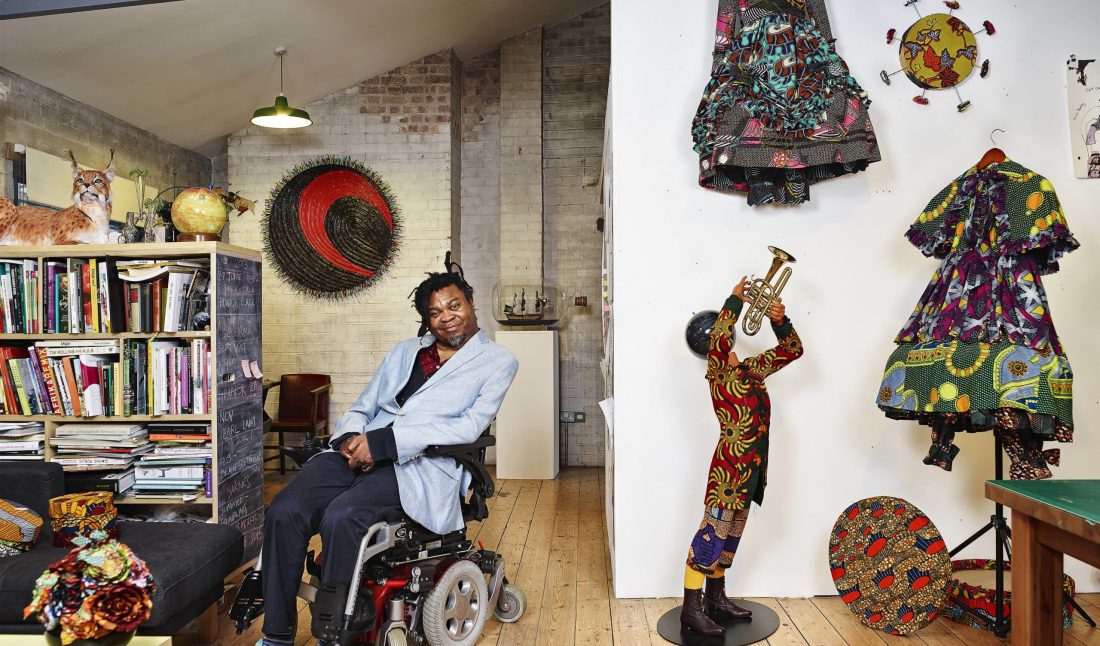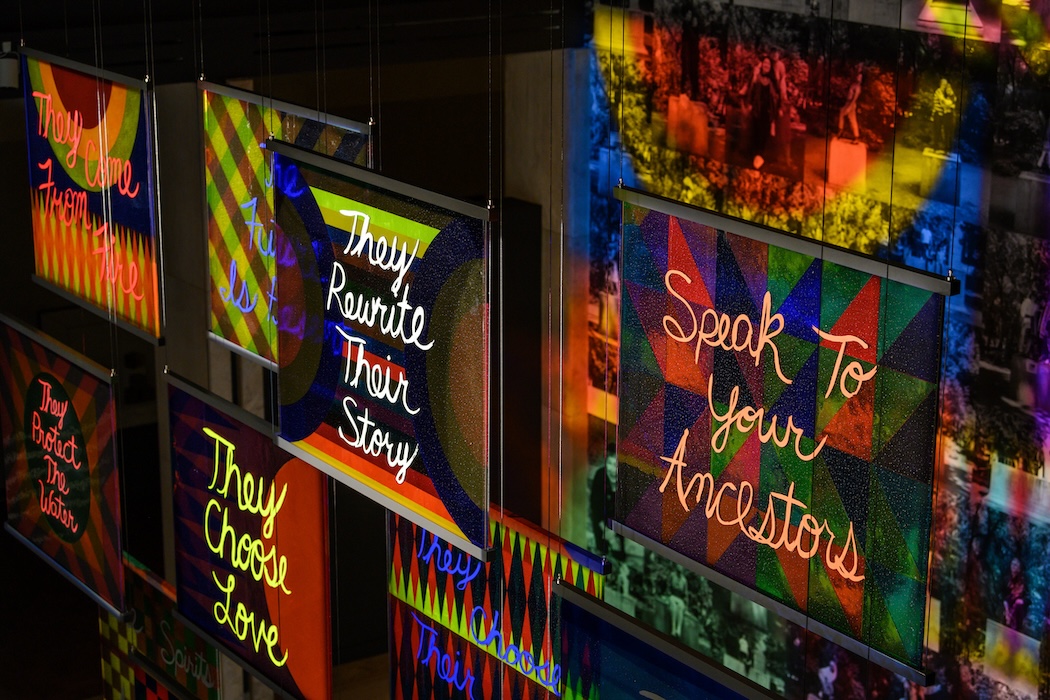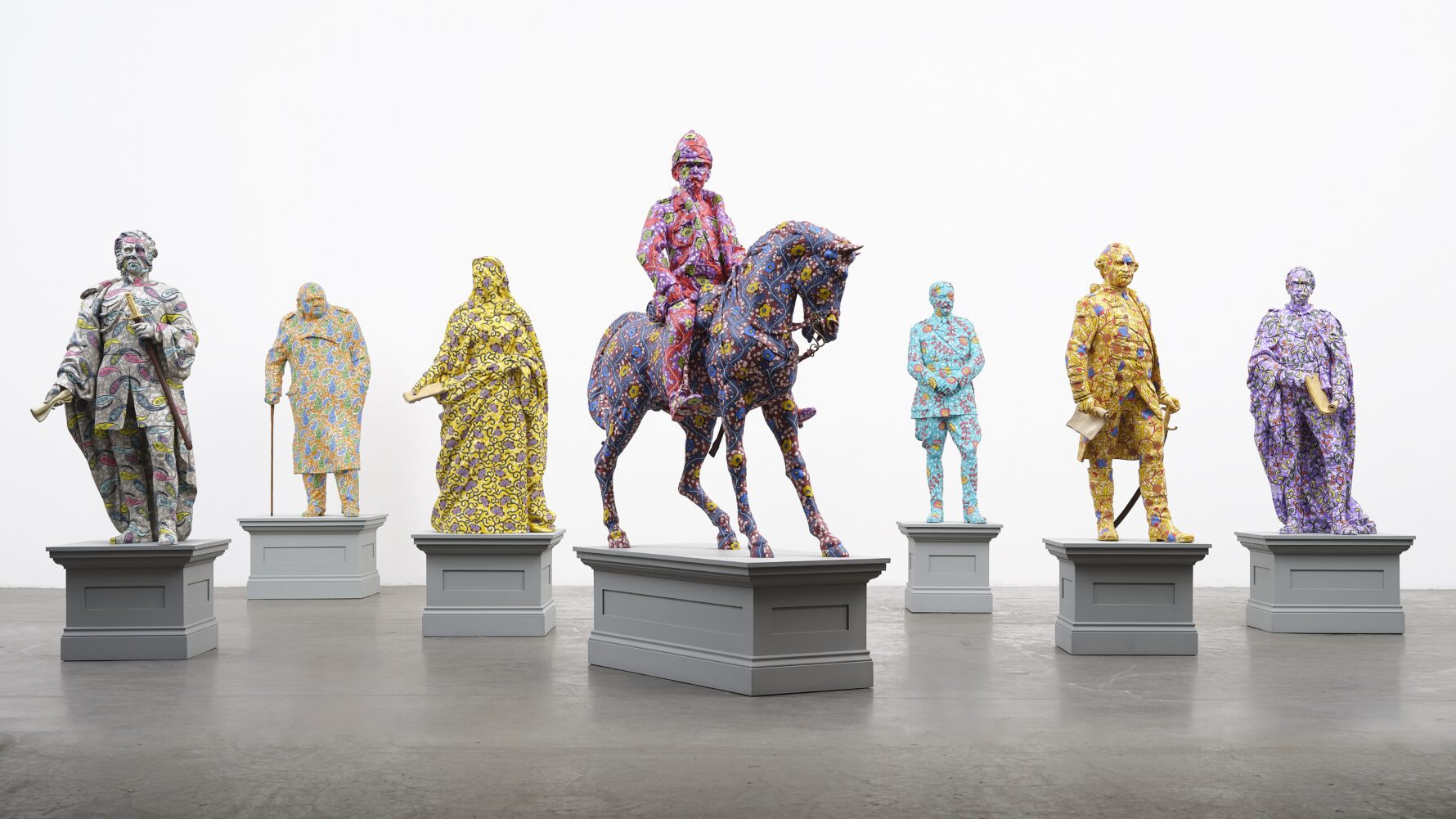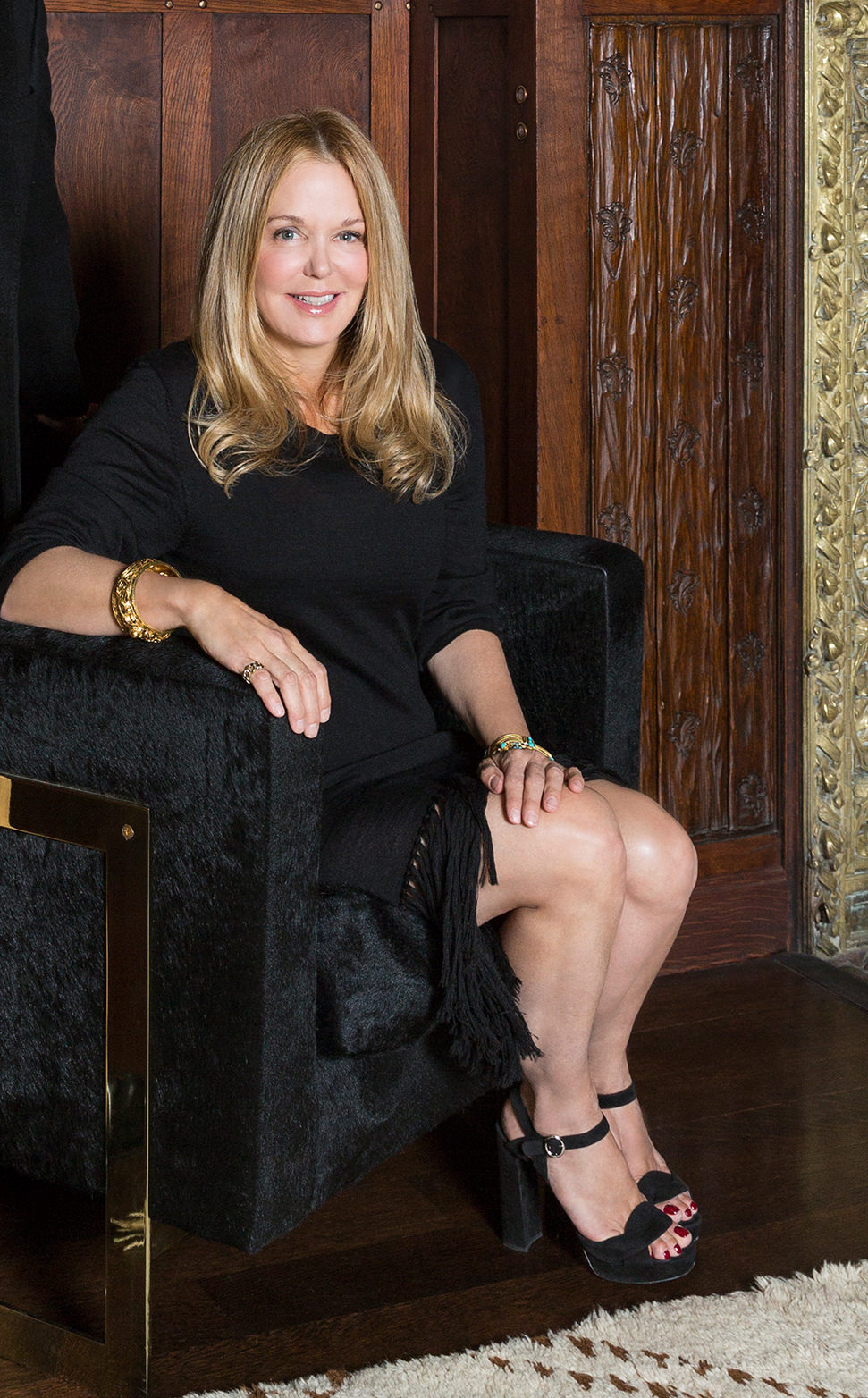In March, the U.K.-based artist Yinka Shonibare MBE was in New York for the reveal of a new public work, Wind Sculpture (SG) I, at Doris C. Freedman Plaza in Central Park (on view through October 14, presented by the Public Art Fund). The 23-foot sculpture in the shape of an untethered sail in the wind is made from fiberglass, painted in a bright pattern of the fabric that features so prominently in his work.
This summer, in July, Shonibare will unveil a major installation in Cleveland, The American Library, part of the inaugural FRONT International triennial. Whitewaller spoke with the artist earlier this spring about both projects and the valuable impact of inclusive, public art.
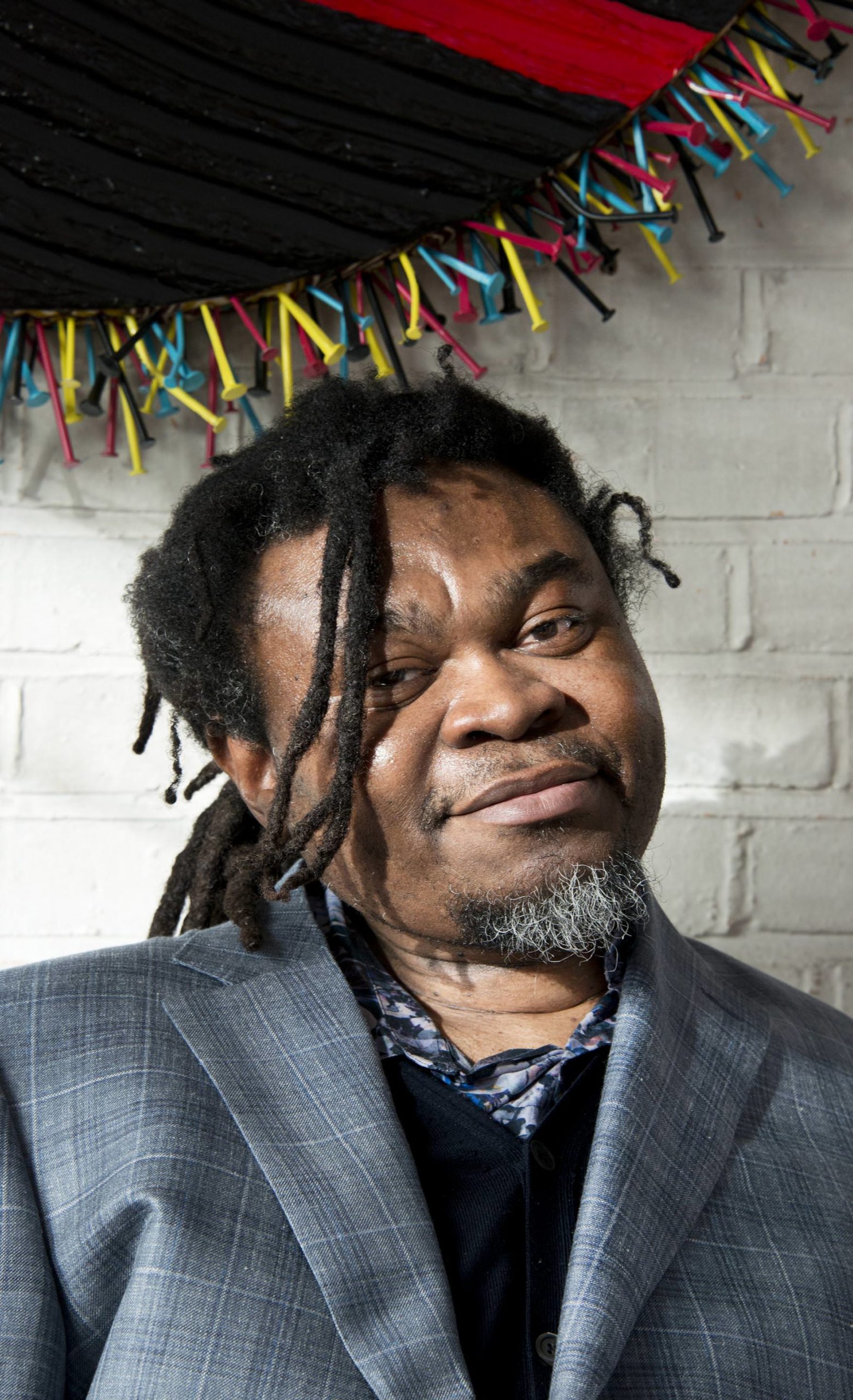 Photo by Marcus Leith ©Royal Academy of Arts, London
Photo by Marcus Leith ©Royal Academy of Arts, London
WHITEWALLER: Can you tell us about Wind Sculpture (SG) I, which you recently debuted with the Public Art Fund?
YINKA SHONIBARE MBE: I made a piece called Nelson’s Ship in a Bottle for the Fourth Plinth project in Trafalgar Square.
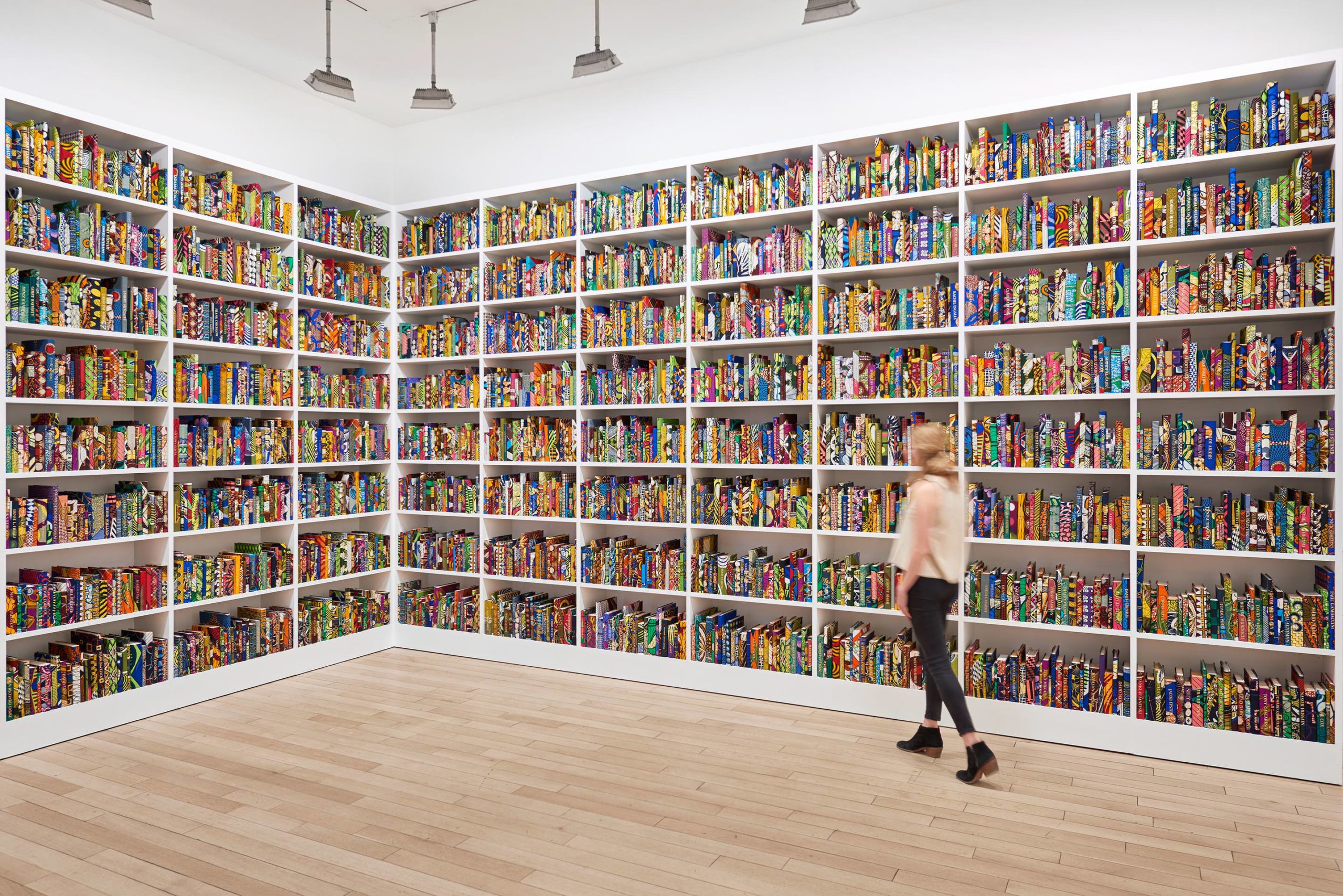 Yinka Shonibare
Yinka ShonibareThe British Library
2014
Hardback books, Dutch wax printed cotton textile, gold foiled names, five wooden chairs, five iPads, iPad stands, headphones, interactive Application and antique wind-up clock
© Phoebe D’Heurle
Courtesy of James Cohan Gallery, New York
Nelson won the Battle of Trafalgar against Napoleon, given the British had access to the oceans, which helped the British Empire expand and prosper. My own identity is a result of Britain colonizing Nigeria. In Trafalgar Square there is Nelson’s statue. He won the battle in a boat called the HMS Victory. I swapped the sails on HMS Victory with the African textiles as sails.
After I finished that, I thought the sails were a great metaphor for migration and the movement of people. The wind has a huge contribution to the way people move about, even today. The idea of wind sculptures started from the sails, and moved to something that is much more abstract. Formally, the sculpture is an attempt to sculpt the invisible, the impossible. You can’t sculpt the wind. You can only leave an impression of the wind.
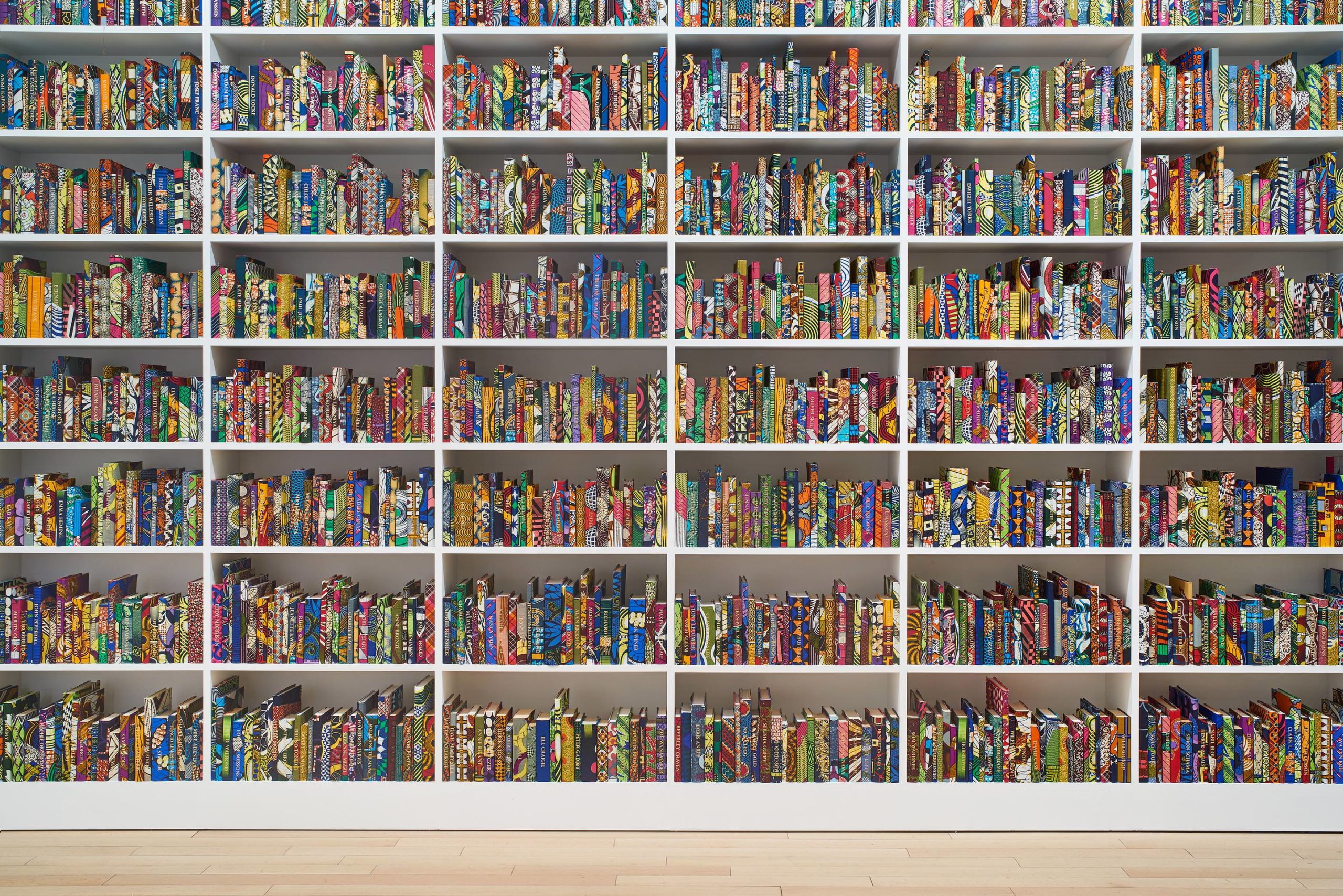 Yinka Shonibare
Yinka ShonibareThe British Library
2014
Hardback books, Dutch wax printed cotton textile, gold foiled names, five wooden chairs, five iPads, iPad stands, headphones, interactive Application and antique wind-up clock
© Phoebe D’Heurle
Courtesy of James Cohan Gallery, New York
WW: How did the setting of New York inspire your approach to this public work?
YS: New York is a city of migrants. And particularly in the U.S., there is the issue of monuments. There has been a great debate about whether certain monuments should be removed. I don’t feel that monuments should be destroyed, and if they are going to be removed I think they should be moved into museums and there should be an education program. I think that if you don’t understand history you repeat the mistakes of the past. But most important, I believe we should erect alternative monuments, things relevant to us.
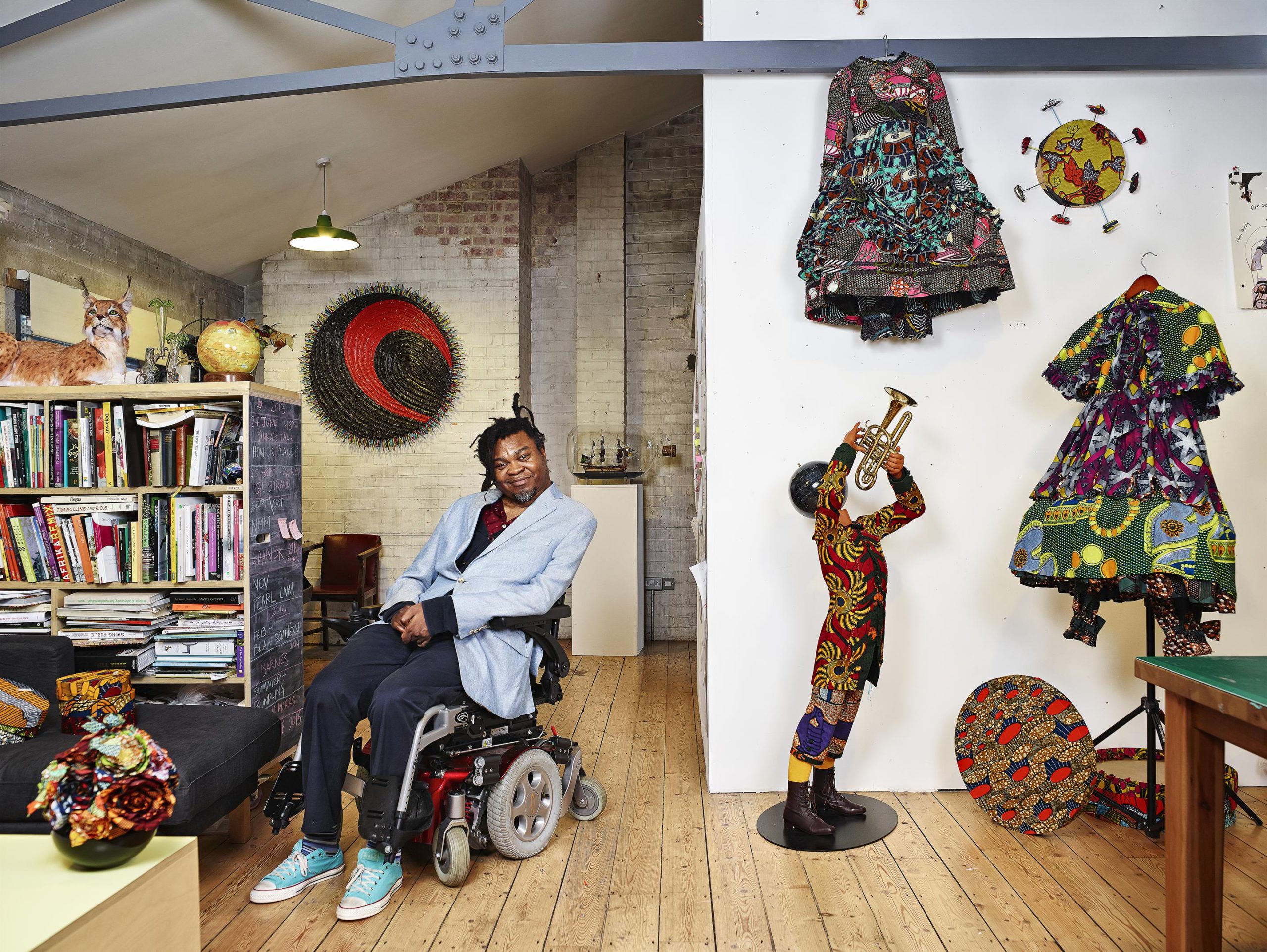 Photo courtesy of Yinka Shonibare MBE, and James Cohan, New York
Photo courtesy of Yinka Shonibare MBE, and James Cohan, New York
The world has changed. So we need to start erecting our own monuments to our own time. My public sculptures are inclusive; they are celebratory. That’s the kind of world my generation wants.
WW: Can you tell us about The American Library, which you’ll install at the Cleveland Public Library in July for FRONT?
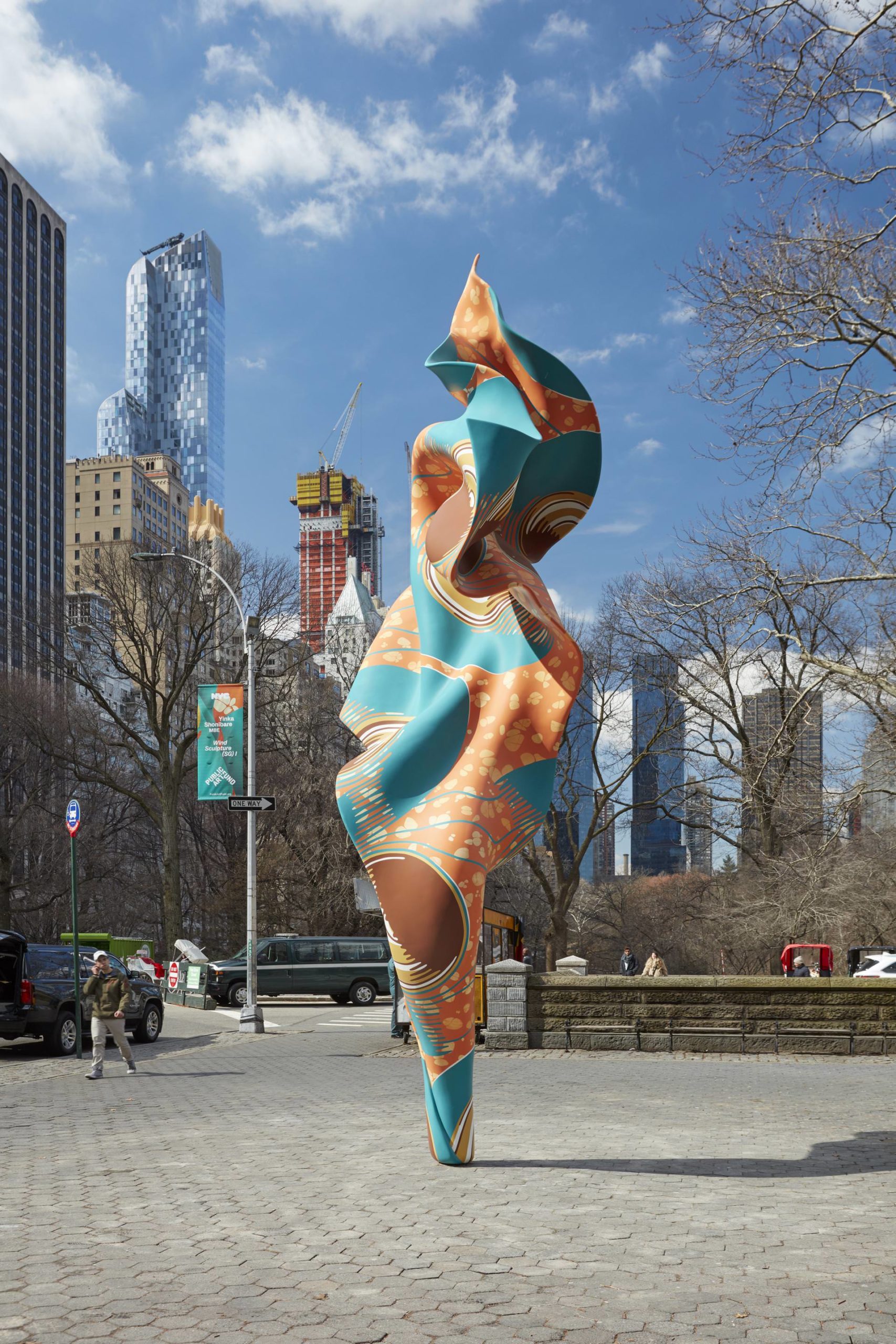 Yinka Shonibare
Yinka Shonibare Wind Sculpture (SG) I
2018
Hand-painted fiberglass resin cast
Photo by Jason Wyche
Courtesy of Public Art Fund, NY.
YS: I did a similar project in the U.K. after Brexit, addressing all these issues around immigrants and nationalism. There are many people who have made huge contributions to Britain whose parents came from elsewhere— Salman Rushdie, Helen Mirren, even Winston Churchill. I created a library of over three thousand books with the names of first- and second-generation immigrants on the spine on African textiles. It’s a very colorful, immersive installation. We also had images of the reasons why people became migrants, like war.
And then in America, the issues of the Dreamers has come up and wanting to build a wall between Mexico and the U.S. And, of course, people have made incredible contributions to the U.S. whose parents came from elsewhere, or grandparents. I discovered that Steve Jobs, his father came from Syria. And for The American Library, I’m including both people who are pro-immigrant and anti-immigrant.
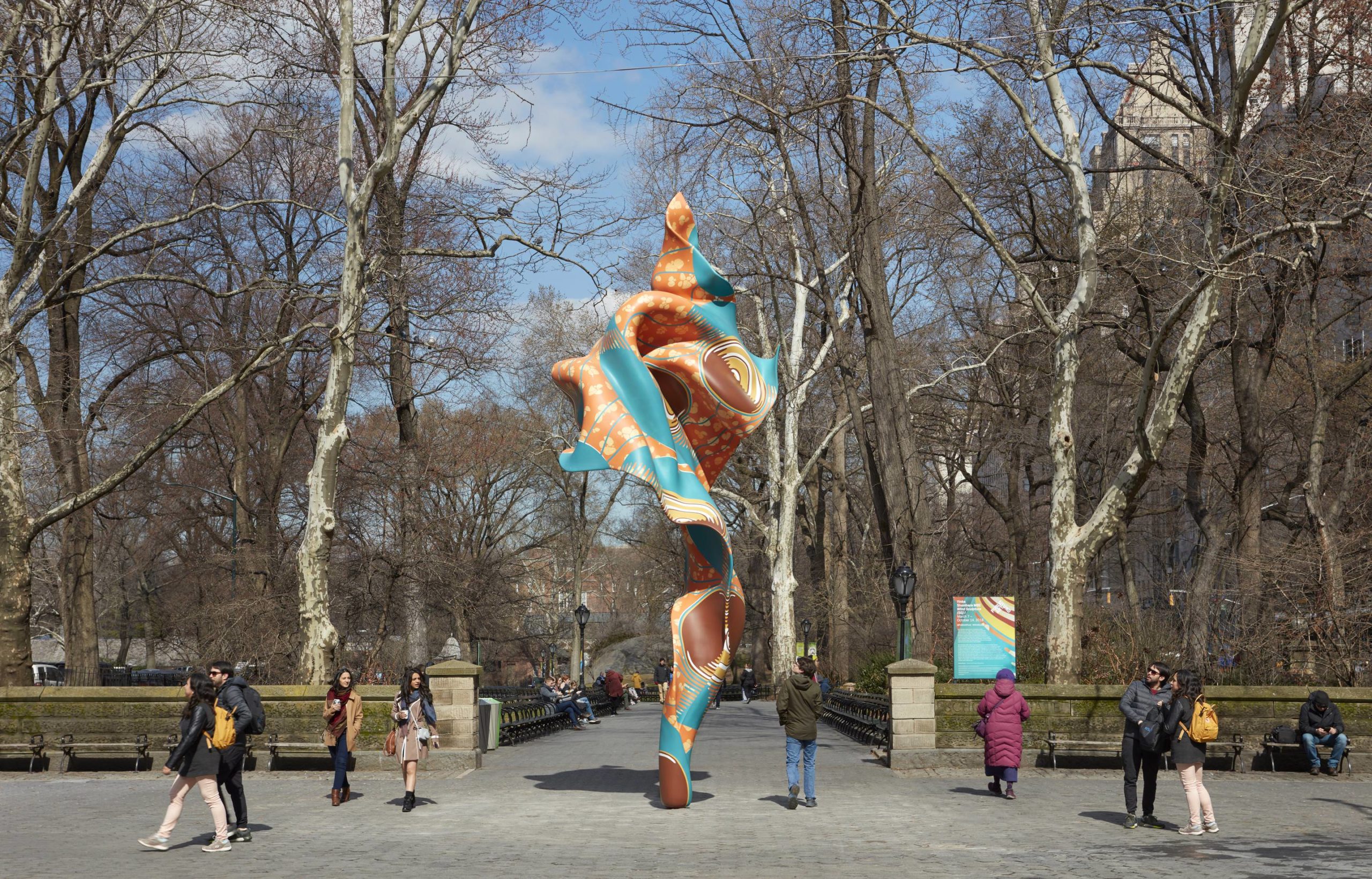 Yinka Shonibare
Yinka Shonibare Wind Sculpture (SG) I
2018
Hand-painted fiberglass resin cast
Photo by Jason Wyche
Courtesy of Public Art Fund, NY.
So I’ve included Donald Trump, whose mother was Scottish and the father was German. I think it’s a very important issue of our time to discuss.
WW: You’ve said before that while your work can be read politically, you’re angry. That you can be playful because you have agency.
YS: Yes. I don’t feel like anybody’s victim. I refuse to be anybody’s victim. Public art is probably one of the most difficult things to do because you have to be able to talk to all people at different levels of society. I really like public sculpture because it’s democratic. Anybody, regardless of their financial situation or class, can engage with public art.







